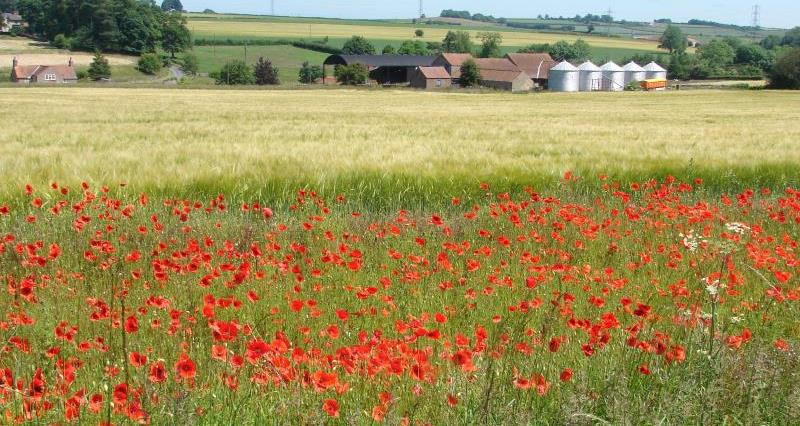British farmers are passionate about providing a huge variety of quality British food for us all to enjoy. But farming is about much more than growing great food.
As well as adding a staggering £108 billion to our economy and employing 3.9 million people, farmer take their role as countryside managers seriously - one of the reasons why 80% of England’s landscape character is now in stable or improving condition.
It’s an important message, but one which is sometimes lost.
To give you the facts to inform the debate, take a look here:
For example, did you know?..
- Agricultural land is the most accessible it’s ever been with about 202,021 kilometres of public rights of way in England.
- The tourist revenue from areas where a proportion of the land is maintained by beef and sheep production is estimated around £1.49 billion.
- Over 207,000 people visited one of England's many working farms, with 375 farms opening their gates to the public for LEAF's Open Farm Sunday in 2014.
- Under agri-environment schemes in England, over 30,000km of hedgerows have been planted or restored, providing habitat and shelter for a range of wildlife.
-Total GHG emissions from agriculture have fallen by 19% since 1990.
- Defra statistics from 2015 showed that ammonia emissions fell by 28% between 1990 and 2013
- Otters have returned to all English Counties from near extinction in the 1970s.
- There has been a significant increase in plant species richness in arable and horticultural land in both the longer term (1990–2007) and shorter term (1998–2007).
- Between 1999 and 2013, populations of the bats in the indicator have increased by 22 per cent. In the short term, between 2007 and 2012 has remained stable.
- Over 1,000 farmers recorded 130 species in GWCT’s annual Farmland Bird Count in 2016, including seven new species.
- Ten species were recorded for the first time in 2015, showing an increase of birds on farmland.
- Sowing temporary grassland with a clover mix can be cost-effective and beneficial to environmental protection. In 2014, 78% of livestock holdings had sown some or all of their temporary grassland with a clover mix.
- From 1987 to 2007 the number of ponds increased by 18% to an estimated 234,000.
- Farmers have created around 37,000km of grass margins, which help prevent pollution of water and protect hedgerows from agricultural activities.
- Not all environmental benefits are delivered through government grants. During the 2014/15 crop year, over 268,000 ha were managed voluntarily under Campaign for the Farmed Environment, with measures including grass buffer strips next to watercourses, pollen and nectar mixtures for bees and efforts to reduce erosion and better protect soil.
- Agricultural uses accounted for just 0.3% of recorded water abstraction in England and Wales in 2012.
- Surveys from 2013 and 2014 suggested that more than one-third of all farmers have diversified into renewable energy, with solar PV, biomass heating and wind power remaining the most popular technologies
See also...
- Find out more about some of the outstanding voluntary work farmers do on the Campaign for the Farmed Environment, Tried and Tested and Voluntary Intiative websites
- Visit our dedicated agri-environment schemes section here
- See how we tell the public about this work on our Back British Farming pages
- See who is on the NFU Environment Forum here
